Speaker: Daniel Belasco
Born and bred in New York City, abstract painter Al Held came to identify his art with the genus loci of his Catskill mountains studio. The barn’s stark geometries and multiple perspectives appealed to his complex linear aesthetic and he preserved many original interior details, including Y-shaped wooden ventilation ducts and hay chutes, while modernizing the facility during his long ownership. This contextualist approach to architecture coincided with Held’s public participation in the emergent discourse about the postmodernist integration of contemporary design and local context in the mid 1960s, in particular Venturi’s advocacy for an architecture of complexity and contradiction with an inclusive ethic of “both-and.” Though it was not uncommon for modern artists like Jackson Pollock to retrofit agricultural buildings to serve as painting studios, Held brought a distinctly constructive approach to his barn studio and its surrounding landscape, creating commonality between the geometries of postmodernist abstraction and agricultural architecture. As critic Deborah Solomon wrote in Architectural Digest, “Held’s art, as much as his house, is informed by a builder’s instinct.”
Biography:
Daniel Belasco is an art historian and Executive Director of the Al Held Foundation. A specialist in postwar and contemporary art, he has published essays and curated exhibitions on the work of Helen Frankenthaler, Roy Lichtenstein, Bradley Walker Tomlin, Mary Reid Kelley, and many more. He previously served as Henry J. Leir Associate Curator of The Jewish Museum and Curator of Exhibitions and Programs at the Samuel Dorsky Museum of Art at SUNY New Paltz. In 2010 Belasco co-curated (with Sarah Lewis) The Dissolve: SITE Santa Fe’s Eighth International Biennial. He holds a Ph.D. from the Institute of Fine Arts, New York University.
